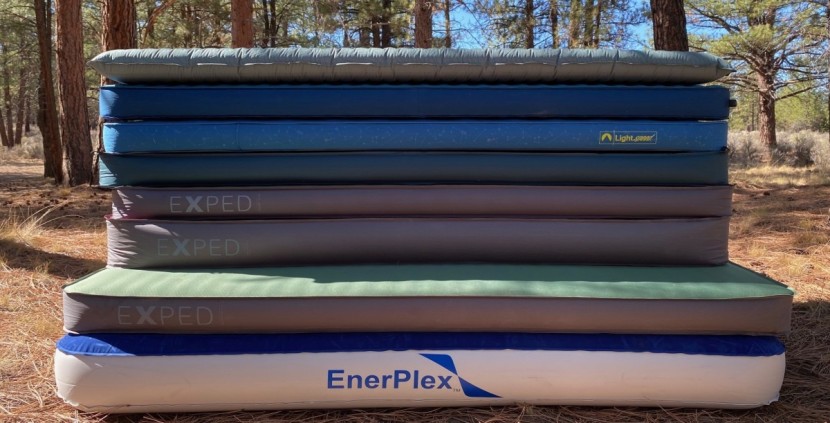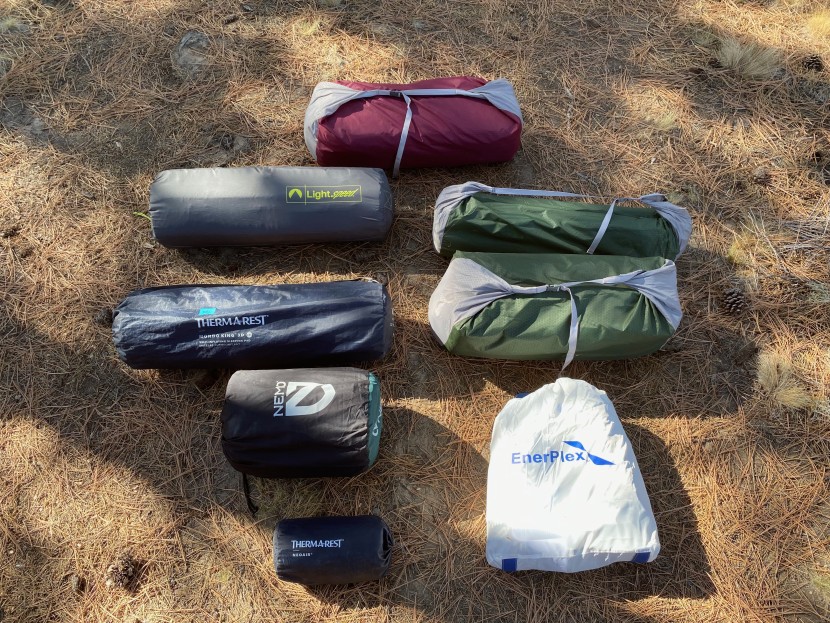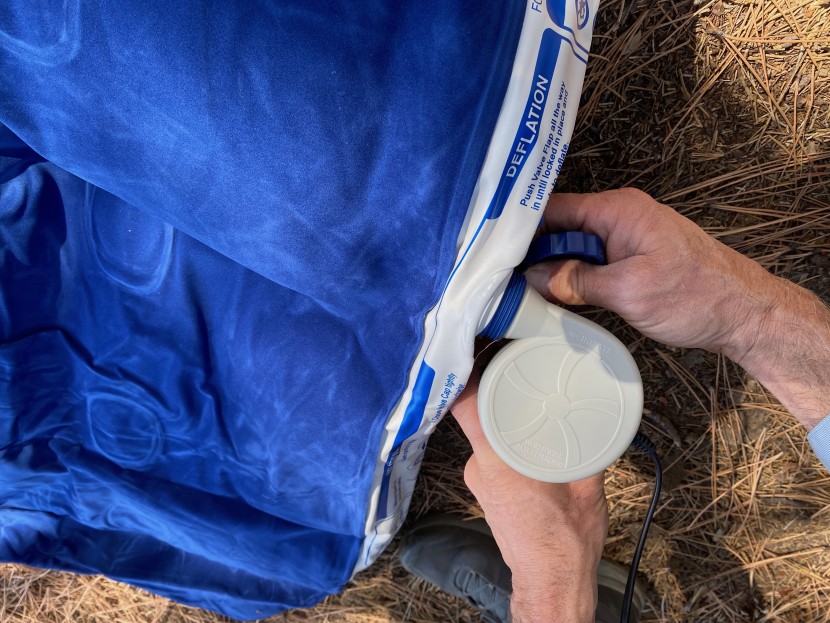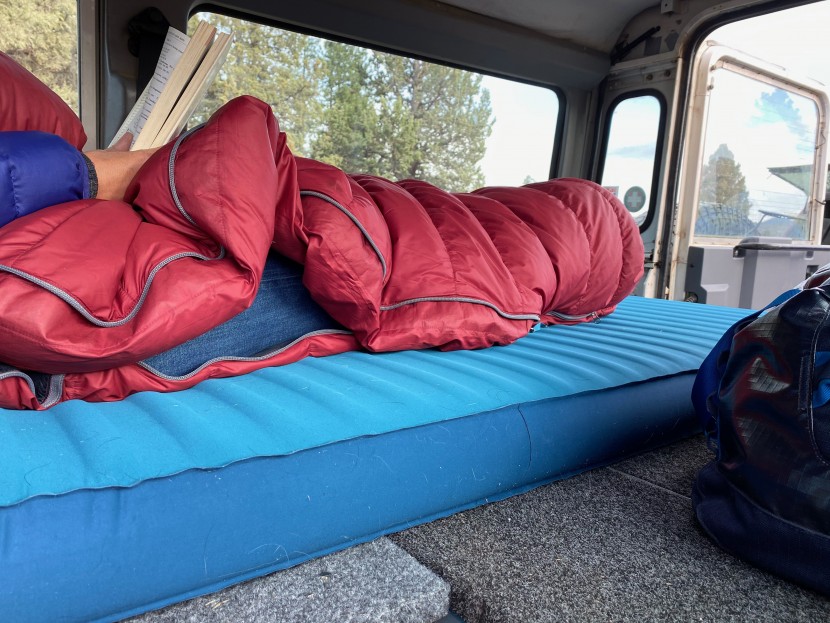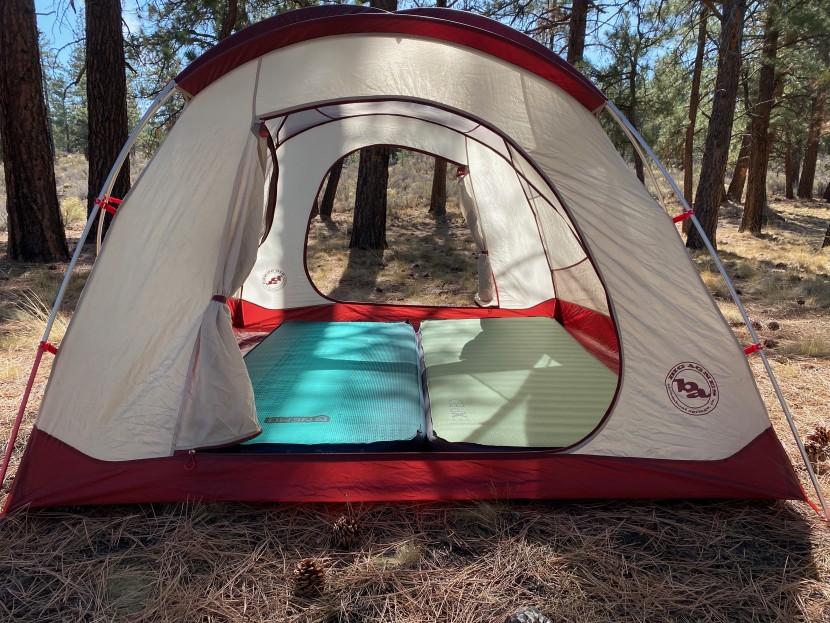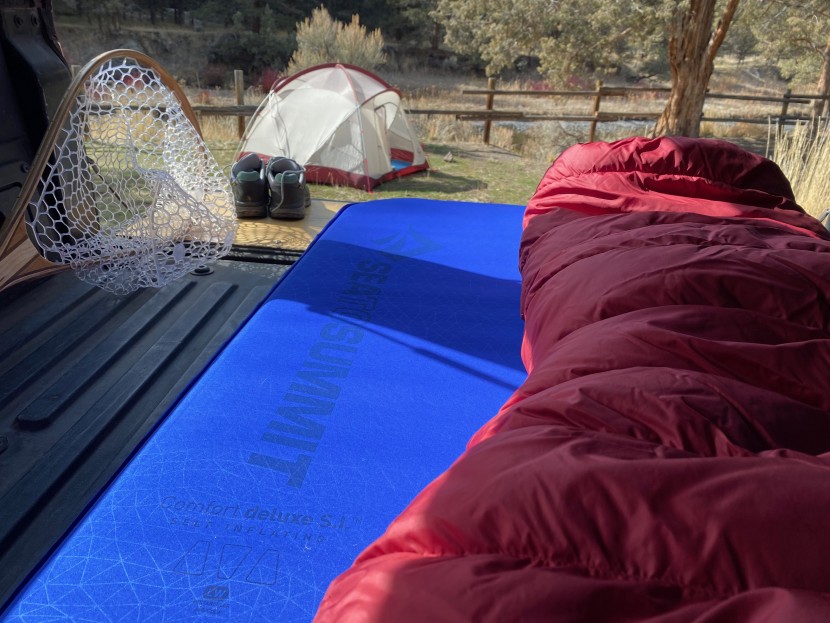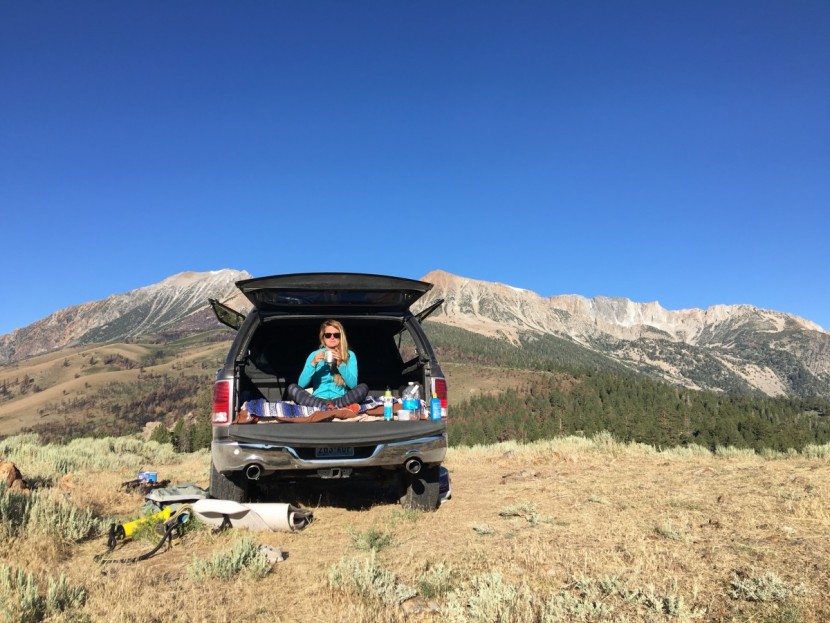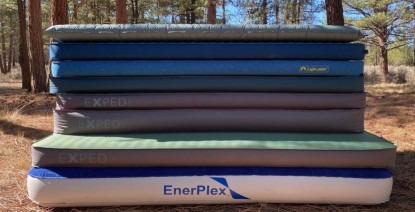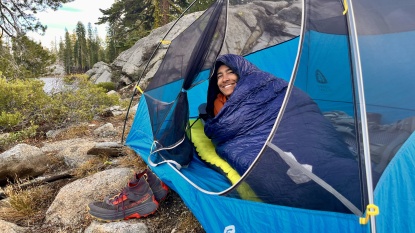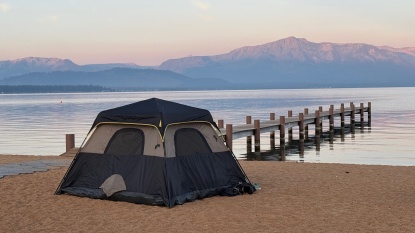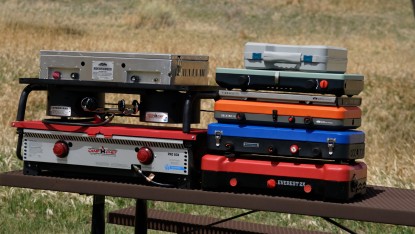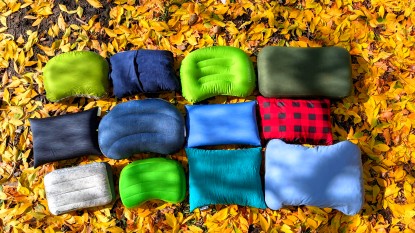If you haven't shopped for a camping mattress recently, you are in for a treat! Camping no longer means squirming through the night on a thin backpacking sleeping pad or shivering on a slow-leaking air mattress. Car camping mattresses are plush and warm and the best way to up your camping game. While most of these comfortable mattresses are far too big for backpacking, they're perfect for short walks from the car to the tent or for a cozy sleep under the stars.
Many are thick enough to use as a backup when unexpected visitors are in town. However, while they look and feel like luscious slabs of comfortable foam, they are not created equal. Some of these are expensive, so we will walk you through several of the most important considerations as you make your choice of a deluxe camping mat. A good night's sleep means you can play that much harder during the day, so a comfortable camping mattress might just be the most essential piece of gear to bring on your next overnight adventure.
Why Buy a Car Camping Mattress?
Depending on the model, sleeping on a car camping mattress can be the next best thing to sleeping in your own bed (and maybe even better considering that you are probably out in the woods or the desert). Car camping mattresses are designed with the same basic concepts in mind as other camping mattresses: a cushion for sleeping that is portable and has a reasonable packed size. To accomplish these goals, virtually all camping mattresses are inflatable. But where car camping mattresses differ from other types of sleeping pads is that they place comfort as the most important feature over other considerations, such as weight or bulk. On the other hand, sleeping pads for backpacking are designed to be light and packable first and foremost, at the expense of comfort. Without worrying about the limitations of weight or size parameters, designers of the car camping mattress can focus on comfort, resulting in a portable mattress that's as comfortable as a memory foam bed. There are even a few models in our test that have achieved a high level of comfort with significantly smaller packed sizes.
Types of Camping Mattresses
We've identified three different types of camping mats in our main review article, but here we'll go in-depth about the differences, advantages, and disadvantages between air beds, backpacking sleeping pads, and self-inflating air mattresses.
Air Beds
We slept on a number of air mattresses for this review. These air beds look sort of like a real mattress, ranging in size from six to eight inches thick. Some are made of TPU laminates (short for Thermoplastic Polyurethane), which can best be described as slightly elastic plastic. Others are made of plasticized PVC, a tough material that is difficult to dispose of and harmful to the environment. Most of these options are double beds, designed for two people, although one person can happily sprawl on them as well. While large, if these pads lose a little bit of air, the edges can collapse, leaving you on the floor if you toss, turn, or roll around in your sleep. Additionally, we tested the lightweight Therm-a-Rest NeoAir Topo Luxe and the Klymit Insulated Double V, which have additional insulation for extra warmth.
The construction, and feeling, of lying on these beds is not unlike that of an inflatable raft. Even those with some insulation are primarily filled with air, meaning that they lend themselves to the bounce house effect. Especially on the larger, two-person models, if one person moves at all in the night, you can bet that the other person is going to feel something of the “shockwave” of air and material bouncing around underneath them. With no foam filling, they are capable of insulating you from the ground but not from the temperature of the air inside the mattress. In our experience, these did not keep us very warm, limiting their usefulness to summer (or indoors).
While most of these are heavy, they tend to pack down relatively small and come with inflation options, either battery-powered or manual, saving you from the unpleasant task of blowing up a massive mattress with your mouth. Remember that these motorized pumps can be loud, making it difficult to make friends with your neighbors and generally detracting from everyone's wilderness experience. While they are the most affordable options in the review, they were also rated the lowest compared to the competition.
Backpacking Sleeping Pads
Check out our sleeping pad review for an incredibly in-depth and thorough look at this category. In general, these pads are designed to offer some padding from the ground while being as light as possible and packing down into tiny sizes for carrying with you in the wilderness. They range from simple, old-school foam pads to thermal insulated inflatable single-person mattresses. These pads tend to be smaller, narrower, and thinner and lack extra foam padding on top or inside the construction of the mattress. As technology advances, some of these pads have begun to approach the comfort levels found in the camping mattress category, but none of them have the same amount of room to roll around. All these attributes serve to keep them light and packable. This is the direction you want to look if you are planning to carry your pad on your back. For the truly comfort-minded, a couple of products in our camping mattress review fit into this category, just barely. But the lightweight Therm-a-Rest NeoAir Topo Luxe is comfortable, relatively warm, and comes in various sizes.
Self-Inflating Insulated Air Mattresses
A self-inflating, insulated air mattress means that it is inflatable and filled with insulating foam. The foam inside the mattress serves a couple of purposes. First of all, it directly insulates your body from the temperature of the ground, which will almost always be colder than your body. The second benefit is that it provides more stability and support to the mattress, ensuring that it is also more comfortable. While air inside a mattress feels quite bouncy, foam combined with air dampens this effect. With their insulating properties, these mattresses are the best choice for camping in cooler weather and for people who run cold.
These self-inflating mattresses also tend to be the most comfortable. Those that we tested received high scores in the comfort metric. Some have so much foam that they are still comfortable even if they lose air through a puncture, tear, or leak. The downside of these foam insulated air mattresses is that they are heavier and hard to pack down into a small size. Fortunately, we are seeing some innovations from some manufacturers who are nearly matching comfort with significantly less bulk. The Nemo Roamer packs into about half the size of many foam mats and is nearly as comfortable. These foam mattresses are among the most expensive, but the added comfort and warmth may be well worth the cost for dedicated car campers.
How to Choose Which Mat is Best for You
How will you use this mattress? How much can you spend? How big is your tent? How much space do you have to store one or more multiple camping mats? These are all good questions to start with. Also, consider the fact that many of the mats in our selection double as excellent guest beds, adding some value to a product you thought you'd only use a few times a year. Perhaps the great night of sleep you get will inspire you to camp more often.
How Much Do I Want to Spend?
The mattresses in this review range in price, but there are products for every budget. If you are looking for a double mattress and money is no issue, then your decision is easy — the Exped MegaMat Duo 10 is excellent for two people. On the other hand, if you are not keen to spend a bundle on the best double mattress you can buy, you are limited to an air mattress. The prices on these ranges considerably and they are all reasonably close in terms of performance. The Klymit Insulated Double V is a light and packable option for two, actually light enough for short backpacking trips and works well in a truck bed.
If you are looking for a single mattress, then you have a wide range of price points to choose from. If money is again no issue, we recommend choosing the best pad available — the Therm-a-Rest Mondo King. This is an incredibly comfortable mattress; however, others rival it in comfort at lower prices.
What Size Mat Do I Want?
This question essentially boils down to whether you want a single-person mattress or a double mattress. If you are one half of the world's most perfectly matched couple, and you always camp with your significant other, then you may want to go the route of a double mattress.
If a double mat is too big for you to travel with or to fit in the back of your vehicle, or if you like the flexibility of having a smaller mattress, then we recommend looking at many of the options for one person. Most are available in regular or extra long/wide, giving you the option of being practical or really treating yourself.
Another upside to single mattresses, even for a couple, is that each person can choose the mattress they prefer. Downsides to this approach can be that they are not the same height, creating an awkward ledge, or are too wide together to fit in the tent, so consider these things while shopping.
Does Warmth Matter in My Mat Selection?
There is still one more thing to consider that may affect what mattress you buy, and that's warmth. Insulating properties in your mattress are essential for a good night's sleep, especially if you are sleeping outside at temperatures lower than 60 degrees. If you're primarily shopping for an indoor guest mat, don't worry so much about R-values. But for most car-camping excursions, the foam core mats come out on top, and many of these mats offer an R-value of 5 or higher, plenty to keep you warm in all but the coldest, most rugged camping conditions.
A Short Explanation of R-value
R-value is a term that is used by the construction industry to describe a material's thermal resistance. While calculating a material's exact R-value is more complicated mathematically than we are capable of explaining, it is enough to understand that R-value describes resistance to heat (or cold) transfer. The higher the R-value, the better the material is at insulating.
Where this becomes noticeable in choosing a mattress is with the air beds in the test. If they have a stated R-value at all is 1.0. According to Wikipedia, this makes them more insulating than hardwood, bricks, or concrete, with roughly the same insulating properties as wood chips or snow. The rest of the mattresses in the test have an R-value range of 3 - 9.5. While 5 is certainly lower than 9.5, in our hands-on testing, we found that we stayed plenty warm sleeping on any mattress that wasn't an air bed and felt pretty chilled sleeping out in the forests and deserts of Oregon on an air bed, even in the summer. If warmth is a priority for you, we recommend passing on the airbeds and going with an insulated mattress for all but the warmest climates.
Final Thoughts
We can't emphasize enough how comfortable these mats are than most sleeping pads designed for backpacking. While expensive, we feel it's worth it for the person in your life that may be reluctant to sleep outdoors or for anyone that just can't seem to get a good night's rest on a small backpacking pad anymore. So keep in mind your constraints, be they finances, climate, or storage space, and don't hesitate to purchase a camping mattress. It will significantly enhance your car camping experience, and having one of these on deck will bring a smile to the face of your next overnight guest.


